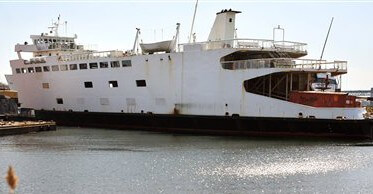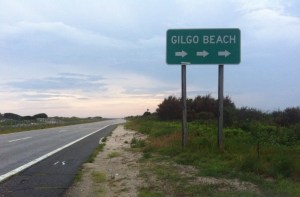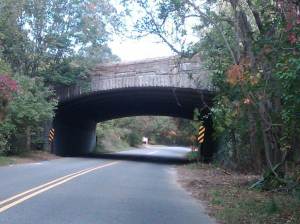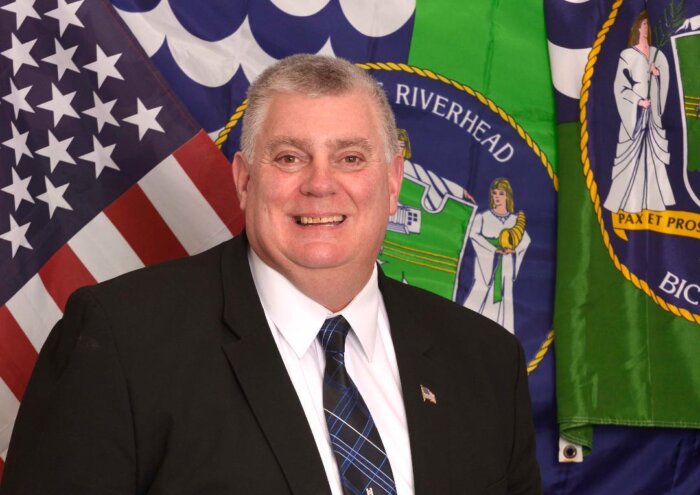
To look at her, one might have serious doubts that the Park City ferryboat will see active service this year, much less be ready for Long Island Sound in time for Memorial Day weekend.
It’s tied up to a busy shipyard that’s just upriver from the U.S. Coast Guard Academy, its car deck filled with structural steel, plastic buckets of paint and all manner of construction materials. A large chunk of the lower passenger deck is missing, and sparks fly from a shipwright’s grinding wheel.
“Oh, it’ll be ready in time for Memorial Day,” said Fred Hall, vice president and general manager of the Bridgeport & Port Jefferson Steamship Co. “I need it by Memorial Day.”
The Park City is the oldest of the three ferries the company operates. Constructed in 1986 in Palatka, Fla., it’s now at the Thames Shipyard and Repair Co. for what’s described as a major $2 million refit.
The most important phase of the project is the installation of a second elevator, which is being welded in place near the stern to put the boat in compliance with the Americans with Disabilities Act. The refit began in mid-February, and ferry officials hope to have it back in service by mid-May. In the meantime, they’re running a two-ferry schedule.
“When this boat was built in ’86, we knew that we’d soon be having the ADA, and we knew that there would be an elevator requirement,” said Hall. “So, we put in an elevator. But was it the correct configuration? No, because we didn’t know what those specifications would be at the time.”
He said that the old elevator will be used only for freight. Unlike the old one, the larger new elevator will access all three decks, including the sun deck up top.
The Park City is 290 feet long and can carry 290 cars and two or three larger trucks, as well as up to 1,000 passengers. She can manage about 16 knots, making the cross-sound trip to Port Jefferson in about an hour and seven minutes. Its sister ships are the Grand Republic and the P.T. Barnum, which were both built to be ADA compliant.
This is not the first Park City. The first one was built in 1898 and was steam powered.
“People liked it at the time because it burned clean coal,” Hall said.
The refit also includes an all new passenger seating area and a new bar. New seats, flooring and ceiling were installed and the air-conditioning system was improved as well. There are new walk-in refrigerators, and the snack bar has a different set-up.
“This is a new business model for us,” Hall said of the new food arrangements. “It’s worked well in other boats.”
The bar was also completely redecorated.
“This will be Long Island Sound’s largest floating sports bar,” Hall said, motioning to several flat-screen TV sets with a wave of his hand. “Satellite TV. No one will miss any baseball, any hockey, any basketball, any soccer …”
The bathrooms were completely redone as well, and they are also in compliance with ADA regulations. And, although the passengers will never see them, there are new sewage-holding tanks.
The interior improvements are now nearly complete, but the elevator work will occupy welders, machinists and mechanics in the coming days and weeks.
The Thames Shipyard has been in business for more than a century. In the early days it mostly refitted wood-hulled sailing vessels and steamships, but now it only accepts steel-hulled boats such as ferries, tugs, barges and larger fishing vessels. The Coast Guard requires that ferries be inspected in dry dock every 30 months, mostly to keep track of the thickness of the hull. New panels are welded in place as needed, barnacles are power-washed off and the hull is repainted.
“It usually takes about two weeks,” said Thames superintendent Kyle Shaugnessy of the time a ship spends in dry dock. “Once you reach a 25 percent decline in thickness, the plate has to be replaced. Outside, it might look fine, but you really have to inspect the hull from the inside. That’s where the Coast Guard goes.”
Today, testing of hull thickness is done by ultrasonic sensors, he said, although gauging thickness by tapping with a hammer remains a skill used by inspectors.
Thames has two large dry docks, which in three hours can lift a large ferryboat out of the water. The Park City didn’t go into dry dock for this refit; it’s not yet due for its next hull inspection.
At some point, the ferry company hopes to make the move from downtown to the East Side of Bridgeport.
“It’s no secret that we have acquired about eight-and-a-half acres over there, and we’re going down the long permit road to make that happen,” Hall said. “There will be shorter travel time, less slow-speed travel in the harbor, easier access for our passengers and so forth.”
As for the Park City, Hall recalls that he was there when it first launched in Florida.
“It entered the water sideways, creating a huge wave,” he said. “I wish I had my camera because when the wave hit the other side of the channel — don’t forget this was Florida — it made alligators fly. I’m not kidding. The alligators really did go airborne.”
Copyright 2012 The Associated Press.



























